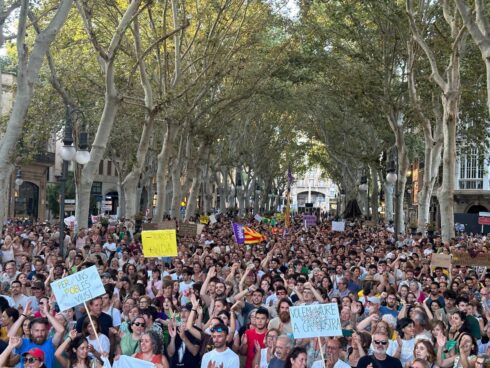Pictures and words by Michael Molyneux
ON a sun-baked Friday evening outside the Plaza de Toros bull-fighting ring in Granada, the murmur of local Granadinos grows louder as the sun sets.
Friends and families greet one another with familiar warmth, drinking tall glasses of Tinto de Verano and ice-cold Alhambra beer, waiting for the doors to open and the show to begin.
Amidst the city’s bustling streets and Moorish architecture, lies the epicentre of Andalucian tradition and controversy: a circular 20,000-seater red-brick amphitheatre where the Feria de Corpus Christi bullfights take place each year in June.
For generations, the Feria de Corpus Christi has been a cornerstone of Granada’s cultural calendar, a celebration that transcends mere entertainment, embodying the very essence of Spanish heritage. Here, beneath the tall cypress trees and gaudy festival banners, locals and tourists gather together to witness a tradition steeped in history, honour and, with temperatures approaching 40°, somewhat heated debate.

La corrida de toros (bullfighting) has long been both revered and reviled, its roots reflecting broader historical and social dynamics of the region, and the fabric of Spanish society in general. To some, it’s a noble art-form, a graceful dance of life and death between man and beast that epitomises courage and skill, passion and pageantry, elegance and zeal.
To others, it’s a cruel and outdated spectacle, a symbol of unnecessary violence and animal exploitation. And there was indeed a small demonstration against the bullfights but this year’s festival still offered a vibrant blend of religious tradition and the high-octane world of Spanish bullfighting.
But while a major part of the festivities, the bullfighting is not the only tradition.
Corpus Christi is a Christian festival celebrated on the Thursday after Trinity Sunday, 60 days after Easter Sunday.








Many communities showcase artisanal crafts and handmade goods during Corpus Christi celebrations.
Local artisans may sell their wares at markets or set up stalls along the procession route, offering traditional items such as pottery, textiles, organic foods, jewellery, and religious artifacts.
Alongside the religious processions, Corpus Christi festivities include street performances by musicians, dancers, and theatrical groups.
These performances range from classical music concerts to folk dance displays to re- enactments of biblical stories and local legends.
Food plays a central role in Corpus Christi celebrations, with traditional dishes shared among friends and family, not to mention the plenitude of local wines, spirits, and beers.
The day usually begins with a special Mass dedicated to the Eucharist, emphasising the importance of the body and blood of Christ.
Following the Mass, there are processions through the streets, where the consecrated host is carried in a monstrance, accompanied by clergy, religious groups, and local dignitaries and community members.
Parishioners dressed in their finest attire follow alongside priests, choirs singing hymns, and children carrying flowers.
Shopkeepers along the route often adorn their storefronts with tapestries and flower arrangements as a sign of respect as the monstrance passes.
The air is filled with the scent of incense and the gentle murmur of prayers, creating a truly unique and spiritual atmosphere.
A delightful counterpoint to the solemnity of the procession is the appearance of the Tarasca, a mythical beast depicted as a large dragon puppet.
Accompanied by lively music and energetic dancers, the Tarasca weaves through the crowds, snapping its jaws and swishing its tail.
This playful tradition adds a touch of whimsy to the festivities, particularly for children who are enthralled by the sight of the fantastical creature.
The Tarasca’s origins are believed to be rooted in pre-Christian mythology, representing the triumph of good over evil, which has been cleverly incorporated into the Corpus Christi celebrations.
Whether you’re a fan of bullfighting or simply seeking a taste of Spanish culture, the Corpus Christi festival offers a unique experience.
It’s a chance to witness age-old traditions, experience Granada’s vibrant energy, and discover the magic that this captivating city holds.
Michael Molyneux is a freelance photojournalist from the UK, based in Granada. You can follow his work, on Instagram @Molyneux_Photography








